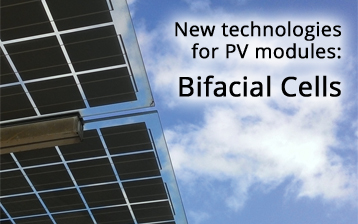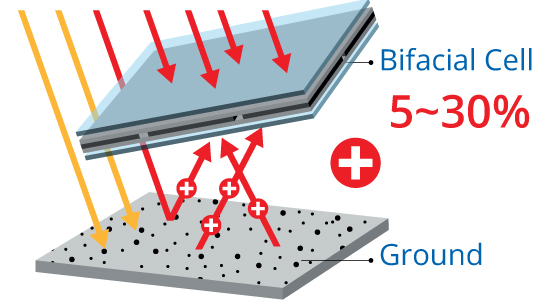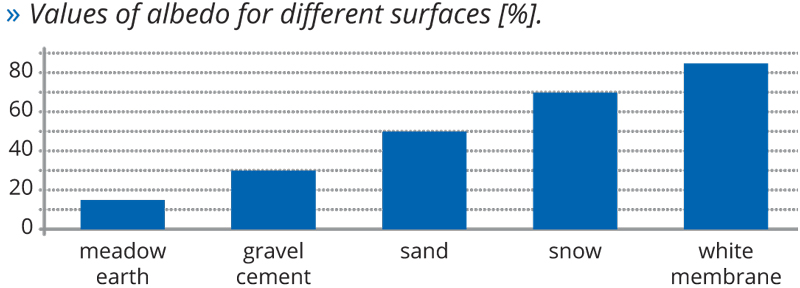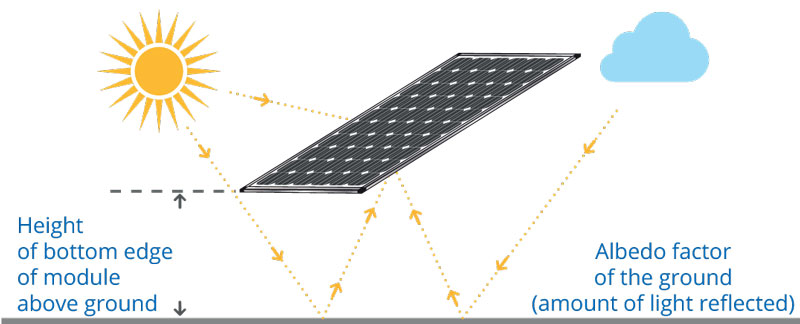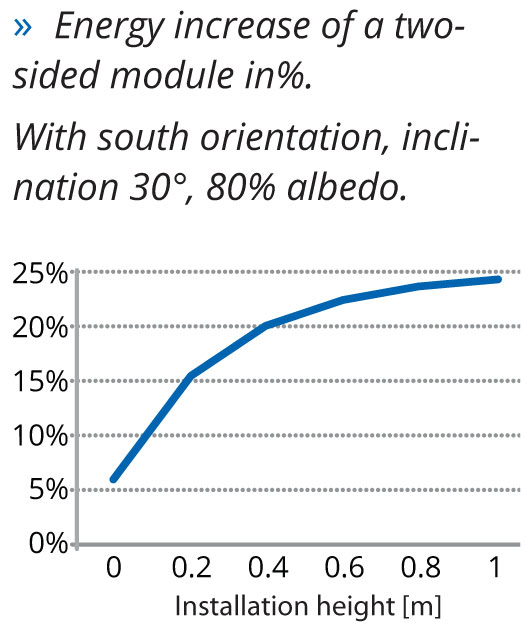Bifacial modules, unlike the traditional ones, capture light from both sides (front and back), thanks to cells with contacts and bus bars on both surfaces.
The idea behind this type of modules was born in the 60s and 70s, and research was carried out for space applications, at first.
Energy also from the back side of the panel
Currently, bifacial modules are based on both monocrystalline and polycrystalline cells, although due to efficiency, mono (especially N-type cells) are preferred, even if they are more expensive.
Whatever the type of cell (type-N or type-P), the back side mustact as a collector of electrons, without obscuring the collection of reflected light.
The construction method of the bifacial cells is completely different from the one-sided ones
Given this significant difference, the construction method of the bifacial cells is completely different from the one-sided ones and requires more complex and expensive equipment.
The back side, in most cases, is a second solar glass; transparent films are less used.
To get the maximum performance from their double-sided modules, the assembly must be done so that the back can receive the maximum amount of reflected light.
Therefore, it is preferable to install these type of modules on ground installations, flat roofs, in rows or, if in a residential environment, on pergolas, canopies or similar.
The most suitable surface
Modules must receive the maximum possible albedo, in order to increase the positive effect of the active side.
Therefore, light-colored reflective surfaces, such as white or similar wads, have to be preferred. Due to their peculiarity of capturing reflected light on the rear side, they are not to be used on pitched roofs, since the “bifacity” would not be used.
The double glass has the advantage of reducing the problems due to the PID effect, of structurally stiffening the panel, with less mechanical stress both during transport and assembly, but also those caused by snow and wind.
For “albedo” we mean the quantity of light reflected with respect to that incident. Being a ratio, it is dimensionless and is usually expressed as a percentage.
The optimum distance
Also height with respect to the reflecting surface and the installation angle influence the increase in power that the bifacial modules can express.
Installation close to the ground or roof will have a negative effect due to self-shadowing.
Some studies indicate that heights between 20 and 50cm are to be preferred. Installations over a meter of height do not bring positive effects compared to lower installations.
The fixing structure plays a fundamental role in the installation of bifacial modules
Given the aforementioned, the fixing structure plays a fundamental role in the installation of bifacial modules.
The classic parallel tracks must be avoided since they may shadow the rear side of the module. Thus specially designed structures have to be adopted for this type of modules, where tracks are positioned on the edges of the module.
Manufacturers of bifacial modules use small junction boxes, (often separated for the two poles) positioned at the corners, precisely to minimize self-shadowing.
The behavior in the field, if installed in the right way, results in an increase of 5-30% compared to performances of singleside modules.
The difference increases even more when switching from clear sky conditions to cloudy days where the incident energy is relatively low.
This increases the percentage of bifacial modules’ gain, due to reflected light. In conditions of strong radiation, the two-sided contribution is higher in absolute terms (power on the back) but lower in relative terms (twosided gain percentage).
Registration data
Up to today, registration data of the bifacial modules are recorded in the Standard Test Condition (STC), which takes into account only the main characteristics.
For this reason, producers of bifacial modules make available, in the accompanying documentation, tables and graphs that allow to evaluate the contribution of the rear surface as a function of albedo, inclination and height from the ground.
On average, the greatest impact will be on the increase in current. The effect on voltage will be negligible.
However, at an international level, technical committees are discussing how to test and classify double-sided modules.





